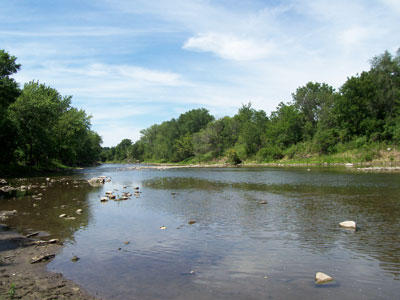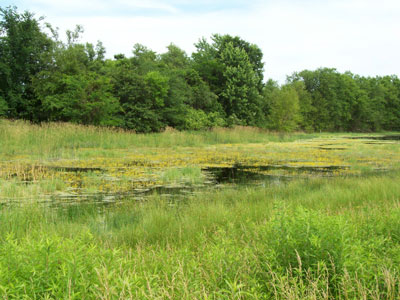"Siltation, loss of submergent and emergent plants, streambed degradation, chemical pollution, and invasive non-native species were listed as High stresses on dragonflies and damselflies in all aquatic habitats."
Iowa's Wildlife Action Plan
As bellweathers for water quality, interest in Iowa dragonfly populations is growing. The Department of Natural Resources includes the state of odonata in their long-range wildlife planning and the statewide Multiple Species Inventory and Monitoring (MSIM) project has been instrumental in systematically collecting data on not only numbers but habitats important to various species.
 Although most of our admiration of these winged jewels involves watching adults flying around chowing down millions of mosquitoes, sometimes it is difficult to remember that odonates are really aquatic insects. The bulk of their lives is spent in the water as nymphs where they prey on other insects and also become the prey of larger carnivores such as fish when they aren't hiding in submergent vegetation. Some of the larger dragonflies may take up to three years to mature at which point the nymph crawls out of the water onto some nearby vegetation and shed its hard exoskeleton. These next few hours are critical to the dragonfly's survival as it pumps and dries its wings in order to fly. Right now it is extremely vulnerable to any predator that finds it hanging on a stem. The next few weeks, a very short time in its entire lifecycle, will be involved in feeding and maturing, finding a mate (or several), and reproducing so that the masses of eggs become the next aquatic nymphs.
Although most of our admiration of these winged jewels involves watching adults flying around chowing down millions of mosquitoes, sometimes it is difficult to remember that odonates are really aquatic insects. The bulk of their lives is spent in the water as nymphs where they prey on other insects and also become the prey of larger carnivores such as fish when they aren't hiding in submergent vegetation. Some of the larger dragonflies may take up to three years to mature at which point the nymph crawls out of the water onto some nearby vegetation and shed its hard exoskeleton. These next few hours are critical to the dragonfly's survival as it pumps and dries its wings in order to fly. Right now it is extremely vulnerable to any predator that finds it hanging on a stem. The next few weeks, a very short time in its entire lifecycle, will be involved in feeding and maturing, finding a mate (or several), and reproducing so that the masses of eggs become the next aquatic nymphs.
Naturally since most of the life cycle is spent in the water, anything affecting our rivers and streams and ponds and lakes also affects the health of our odonate populations. Channelized rivers run so fast during flooding that nymphs are often washed away. Ponds and lakes subject to chemical runoff and extreme siltation often have only generalist species that are more adept at surviving in less-than-pristine conditions. A sandy stream bottom critical for laying eggs for some species becomes covered with mud and the species disappears. Good biodiversity goes hand in hand with better water quality.
 The water we drink each day comes from the same habitats where we find dragonflies and damselflies living out their lives. Which water sources do you prefer? The coalition formed in the Boone River watershed to protect the resource is a great example of how the community working together has made a difference. The Boone River is the only known location of the recently discovered Westfall's Snaketail (Ophiogompus westfalli) which previously was known only from clear, rocky streams in the Ozarks.
The water we drink each day comes from the same habitats where we find dragonflies and damselflies living out their lives. Which water sources do you prefer? The coalition formed in the Boone River watershed to protect the resource is a great example of how the community working together has made a difference. The Boone River is the only known location of the recently discovered Westfall's Snaketail (Ophiogompus westfalli) which previously was known only from clear, rocky streams in the Ozarks.
 Support for shallow wetlands not only provides habitat for odonates but provides a natural filtering agent to protect our water supplies. These wetlands slow the movement of water into rivers and streams as chemical agents are broken down to be less obtrusive. Flooding is somehwat mitigated as water quality is improved. The effectiveness of these wetlands can be judged by the diveristy of odonate species recorded.
Support for shallow wetlands not only provides habitat for odonates but provides a natural filtering agent to protect our water supplies. These wetlands slow the movement of water into rivers and streams as chemical agents are broken down to be less obtrusive. Flooding is somehwat mitigated as water quality is improved. The effectiveness of these wetlands can be judged by the diveristy of odonate species recorded.